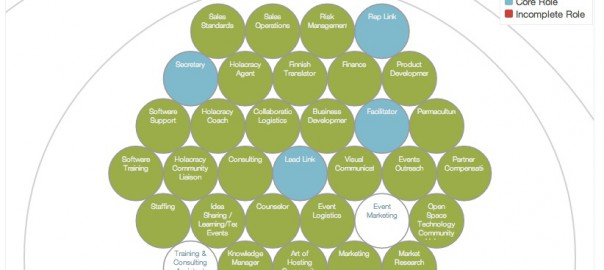What happens or needs to happen when an organisation switches to Holacracy?
With this article, I intend to give some clarity for founders or owners of companies that consider using Holacracy. I will outline the steps that need to be taken to move from the existing structure to Holacracy.
I will use our own case – that of Structure & Process – to explain the steps as we go along.
Establishing the legal base for Holacracy: The Foundational Document
A company moves to Holacracy when the current power-holders adopt the Holacracy Constitution.
In Structure & Process’s case, this was done by myself, Martina Röll, the sole owner, establishing and signing a foundational document.
It reads pretty straightforwardly:
Continue reading The Birth of an Holacracy organisation: the setup of Structure & Process


